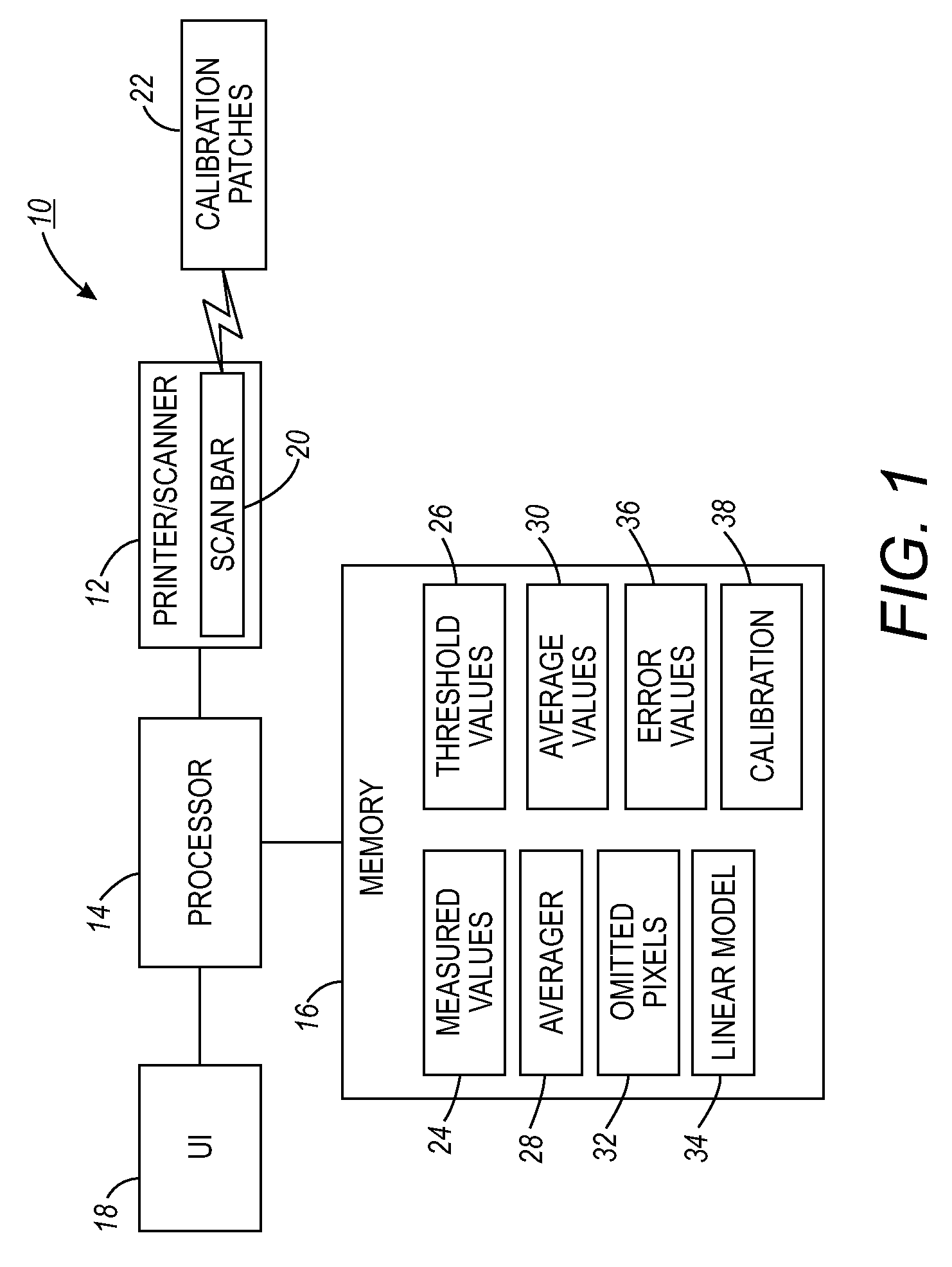Method of compensating for clipping in input scanners
a scanner and input technology, applied in the field of document scanner calibration systems and methods, can solve the problems of reducing the dynamic range, the number of actual brightness levels available, and the contribution of clipped pixels to erroneous patch averages, so as to facilitate the improvement of error estimation for scanner calibration. or printer
- Summary
- Abstract
- Description
- Claims
- Application Information
AI Technical Summary
Benefits of technology
Problems solved by technology
Method used
Image
Examples
Embodiment Construction
[0015]In accordance with various features described herein, systems and methods are described that overcome the above-described problems by increasing the accuracy of a calibration method, both at the very light and the very dark end of the brightness spectrum. The systems and methods described herein are applied to images containing calibration patches, such as are used for printer calibration.
[0016]With reference to FIG. 1, a calibration system 10 includes a printing device 12, such as a printer or scanner, which is coupled to a processor 14. The processor 14 is additionally coupled to a memory 16, and optionally to a user interface 18 by which information is presented to and / or received from a user. The printing device 12 includes a scan bar 20 that scans one or more calibration patches or sheets 22 to measure pixel values thereon for calibrating the printer 12. For example, a Xerox Freeflow™ 655 full-width array scan bar can be used to scan the calibration patches 22 for use in ...
PUM
 Login to View More
Login to View More Abstract
Description
Claims
Application Information
 Login to View More
Login to View More - R&D
- Intellectual Property
- Life Sciences
- Materials
- Tech Scout
- Unparalleled Data Quality
- Higher Quality Content
- 60% Fewer Hallucinations
Browse by: Latest US Patents, China's latest patents, Technical Efficacy Thesaurus, Application Domain, Technology Topic, Popular Technical Reports.
© 2025 PatSnap. All rights reserved.Legal|Privacy policy|Modern Slavery Act Transparency Statement|Sitemap|About US| Contact US: help@patsnap.com



